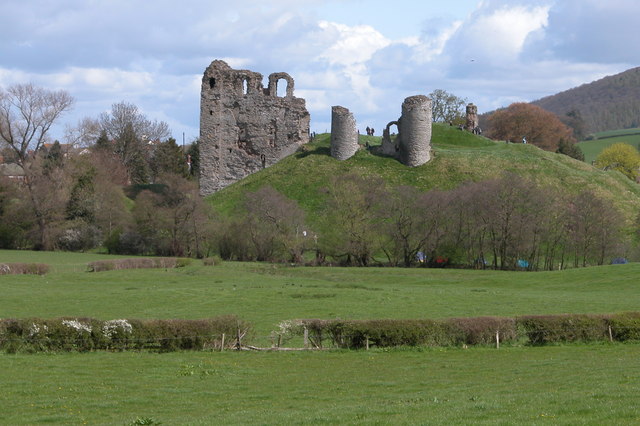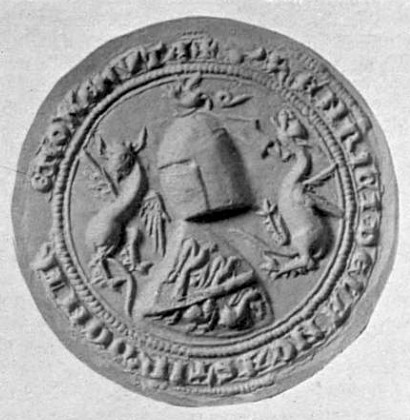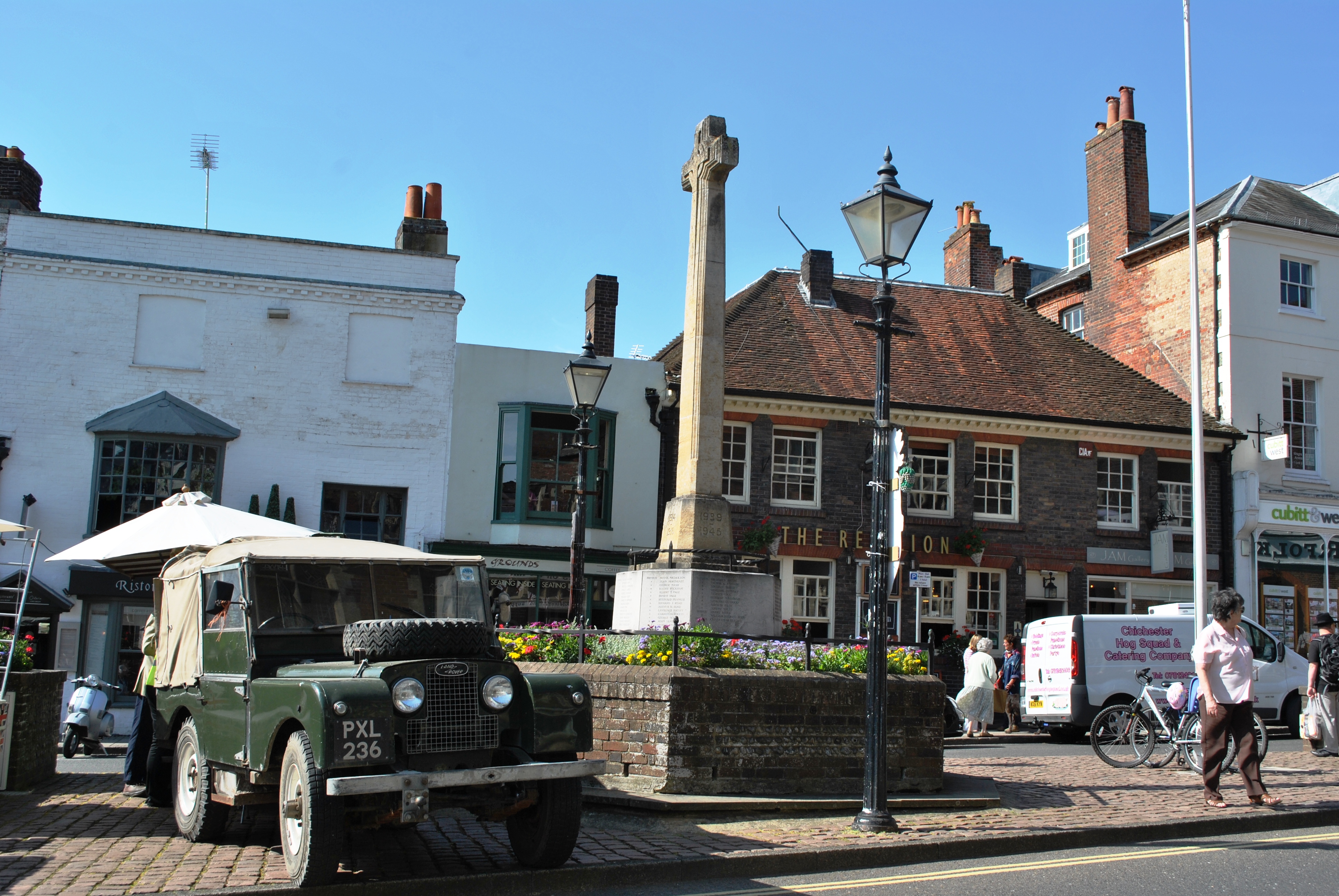|
Alice De Warenne
Alice de Warenne, Countess of Arundel (15 June 1287 – 23 May 1338) was an English noblewoman and heir apparent to the Earldom of Surrey. In 1305, she married Edmund FitzAlan, 9th Earl of Arundel. Family Alice, the only daughter of William de Warenne (1256-1286) and Joan de Vere, daughter of Robert de Vere, 5th Earl of Oxford, was born on 15 June 1287 in Warren, Sussex, six months after her father was accidentally killed in a tournament on 15 December 1286. On the death of her paternal grandfather, John de Warenne, 6th Earl of Surrey in 1304, her only sibling John de Warenne, 7th Earl of Surrey succeeded to the earldom. He became estranged from his childless wife and they never reconciled, leaving Alice as the heir presumptive to the Surrey estates and title. Marriage to the Earl of Arundel In 1305, Alice married Edmund Fitzalan, 9th Earl of Arundel, cites the son of Richard Fitzalan, 8th Earl of Arundel and Alice of Saluzzo. cites He had initially refused her, for reaso ... [...More Info...] [...Related Items...] OR: [Wikipedia] [Google] [Baidu] |
Edmund FitzAlan, 9th Earl Of Arundel
Edmund Fitzalan, 2nd Earl of Arundel (1 May 128517 November 1326) was an English nobleman prominent in the conflict between King Edward II and his barons. His father, Richard Fitzalan, 1st Earl of Arundel, died in 1302, while Edmund was still a minor. He therefore became a ward of John de Warenne, Earl of Surrey, and married Warenne's granddaughter, Alice. In 1306 he was styled Earl of Arundel, and served under Edward I in the Scottish Wars, for which he was richly rewarded. After Edward I's death, Arundel became part of the opposition to the new king Edward II, and his favourite Piers Gaveston. In 1311 he was one of the so-called Lords Ordainers who assumed control of government from the king. Together with Thomas, Earl of Lancaster, he was responsible for the death of Gaveston in 1312. From this point on, however, his relationship to the king became more friendly. This was to a large extent due to his association with the king's new favourite Hugh Despenser the younger ... [...More Info...] [...Related Items...] OR: [Wikipedia] [Google] [Baidu] |
Edward II Of England
Edward II (25 April 1284 – 21 September 1327), also called Edward of Caernarfon, was King of England and Lord of Ireland from 1307 until he was deposed in January 1327. The fourth son of Edward I, Edward became the heir apparent to the throne following the death of his elder brother Alphonso. Beginning in 1300, Edward accompanied his father on invasions of Scotland. In 1306, he was knighted in a grand ceremony at Westminster Abbey. Following his father's death, Edward succeeded to the throne in 1307. He married Isabella, the daughter of the powerful King Philip IV of France, in 1308, as part of a long-running effort to resolve tensions between the English and French crowns. Edward had a close and controversial relationship with Piers Gaveston, who had joined his household in 1300. The precise nature of their relationship is uncertain; they may have been friends, lovers, or sworn brothers. Edward's relationship with Gaveston inspired Christopher Marlowe's 159 ... [...More Info...] [...Related Items...] OR: [Wikipedia] [Google] [Baidu] |
Maud Chaworth
Maud de Chaworth (2 February 1282 – 3 December 1322) was an English noblewoman and wealthy heiress. She was the only child of Patrick de Chaworth. Sometime before 2 March 1297, she married Henry, 3rd Earl of Lancaster, by whom she had seven children. Early Life Maud was the daughter of Sir Patrick de Chaworth, Baron of Kidwelly, in Carmarthenshire, South Wales, and Isabella de Beauchamp. Her maternal grandfather was William de Beauchamp, 9th Earl of Warwick. Her father died on 7 July 1283; he was thought to be 30 years old. His paternal line was from the Castle of Chaources, now Sourches, in the Commune of St. Symphorien, near Le Mans in the County of Maine at the time of the Angevin Empire. Three years later, in 1286, Isabella de Beauchamp married Hugh Despenser the Elder and had two sons and four daughters by him. This made Maud the half-sister of Hugh the younger Despenser. Her mother died in 1306. Maud was only a year old when her father died, and his death left her a ... [...More Info...] [...Related Items...] OR: [Wikipedia] [Google] [Baidu] |
Henry, 3rd Earl Of Lancaster
Henry, 3rd Earl of Leicester and Lancaster ( – 22 September 1345) was a grandson of King Henry III of England (1216–1272) and was one of the principals behind the deposition of King Edward II (1307–1327), his first cousin. Origins He was the younger son of Edmund Crouchback, 1st Earl of Lancaster, Earl of Leicester, a son of King Henry III by his wife Eleanor of Provence. Henry's mother was Blanche of Artois, Queen Dowager of Navarre. Henry's elder brother Thomas, 2nd Earl of Lancaster, succeeded their father in 1296, but Henry was summoned to Parliament on 6 February 1298/99 by writ directed to ''Henrico de Lancastre nepoti Regis'' ("Henry of Lancaster, nephew of the king", Edward I), by which he is held to have become Baron Lancaster. He took part in the Siege of Caerlaverock in July 1300. Petition for succession and inheritance After a period of long-standing opposition to King Edward II and his advisors, including joining two open rebellions, Henry's brother Th ... [...More Info...] [...Related Items...] OR: [Wikipedia] [Google] [Baidu] |
Eleanor Of Lancaster
Eleanor of Lancaster, Countess of Arundel (sometimes called Eleanor Plantagenet; 11 September 1318 – 11 January 1372) was the fifth daughter of Henry, 3rd Earl of Lancaster and Maud Chaworth. First marriage and issue Eleanor married first on 6 November 1330 John de Beaumont, 2nd Baron Beaumont (d. 1342), son of Henry Beaumont, 4th Earl of Buchan, 1st Baron Beaumont (c.1288-1340) by his wife Alice Comyn (1289-3 July 1349). He died in a tournament on 14 April 1342. They had one son, born to Eleanor in Ghent whilst serving as lady-in-waiting to Queen Philippa of Hainault: *Henry Beaumont, 3rd Baron Beaumont, (4 April 1340 – 25 July 1369), the first husband of Lady Margaret de Vere (d. 15 June 1398), the daughter of John de Vere, 7th Earl of Oxford by his wife Maud de Badlesmere. Henry and Margaret had one son, John Beaumont, 4th Baron Beaumont KG (1361-1396). Second marriage On 5 February 1345 at Ditton Church, Stoke Poges, Buckinghamshire, she married Richard FitzAlan, 3 ... [...More Info...] [...Related Items...] OR: [Wikipedia] [Google] [Baidu] |
Clement VI
Pope Clement VI ( la, Clemens VI; 1291 – 6 December 1352), born Pierre Roger, was head of the Catholic Church from 7 May 1342 to his death in December 1352. He was the fourth Avignon pope. Clement reigned during the first visitation of the Black Death (1348–1350), during which he granted remission of sins to all who died of the plague. Roger steadfastly resisted temporal encroachments on the Church's ecclesiastical jurisdiction and, as Clement VI, entrenched French dominance of the Church and opened its coffers to enhance the regal splendour of the Papacy. He recruited composers and music theorists for his court, including figures associated with the then-innovative Ars Nova style of France and the Low Countries. Early life Birth and family Pierre Roger (also spelled Rogier and Rosiers) was born in the château of Maumont, today part of the commune of Rosiers-d'Égletons, Corrèze, in Limousin, France, the son of the lord of Maumont-Rosiers-d'Égletons. He had an elde ... [...More Info...] [...Related Items...] OR: [Wikipedia] [Google] [Baidu] |
Isabel Le Despenser, Countess Of Arundel
Isabel le Despenser (1312 – living 1356, and died by 1374/5) was an English noblewoman. She was the eldest daughter of Hugh le Despenser, 2nd Baron le Despenser and Eleanor de Clare, ''suo jure'' 6th Lady of Glamorgan. Her mother was the eldest daughter of Joan of Acre, Princess of England; thus making Isabel a great-granddaughter of King Edward I by his first consort, Eleanor of Castile, while her father is famous for being the favourite of Edward II of England. Marriage Though he had stood against Edward II in the past, Edmund FitzAlan, 9th Earl of Arundel had loyally supported him since the 1320s. Thus it must have seemed to be politically prudent to Edmund to marry his heir Richard to the eldest daughter of the King's closest friend and adviser Hugh le Despenser. For Hugh's part, a large incentive for him must have been that he could expect his daughter Isabel would one day become Countess of Arundel.Higginbotham, Susan. "Divorce, Medieval Style Retrieved 15 October 20 ... [...More Info...] [...Related Items...] OR: [Wikipedia] [Google] [Baidu] |
Earl Of Surrey
Earl of Surrey is a title in the Peerage of England that has been created five times. It was first created for William de Warenne, a close companion of William the Conqueror. It is currently held as a subsidiary title by the Dukes of Norfolk. History The Earldom of Surrey was first created in 1088 for William de Warenne, as a reward for loyal service to William during the Conquest. He received the lordship of Reigate Castle in Surrey, but also had holdings in twelve other counties. Perhaps because he held little property in Surrey, the earldom came to be more commonly called ''of Warenne''. The name Warenne comes from the name of their property in Normandy where the family's ancestral castle, Bellencombre, was located on the Varenne River. It was held by William de Warenne's son and grandson, both also named William, and then by the husbands of Isabella, daughter of the third William de Warenne. The first of these was William of Blois, son of King Stephen, and the sec ... [...More Info...] [...Related Items...] OR: [Wikipedia] [Google] [Baidu] |
Arundel Castle Hill Fort
Arundel ( ) is a market town and civil parish in the Arun District of the South Downs, West Sussex, England. The much-conserved town has a medieval castle and Roman Catholic cathedral. Arundel has a museum and comes second behind much larger Chichester in its number of listed buildings in West Sussex. The River Arun runs through the eastern side of the town. Arundel was one of the boroughs reformed by the Municipal Reform Act 1835. From 1836 to 1889 the town had its own Borough police force with a strength of three. In 1974 it became part of the Arun district, and is now a civil parish with a town council. Name The name comes from the Old English ''Harhunedell'', meaning "valley of horehound", and was first recorded in the Domesday Book. Folk etymology, however, connects the name with the Old French word ''arondelle'', meaning "swallow", and swallows appear on the town's arms. Governance An electoral ward of the same name exists. This ward stretches north to Hou ... [...More Info...] [...Related Items...] OR: [Wikipedia] [Google] [Baidu] |
Hereford
Hereford () is a cathedral city, civil parish and the county town of Herefordshire, England. It lies on the River Wye, approximately east of the border with Wales, south-west of Worcester, England, Worcester and north-west of Gloucester. With a population of 53,112 in 2021 it is by far the largest settlement in Herefordshire. An early town charter from 1189, granted by Richard I of England, describes it as "Hereford Welsh Lost Lands, in Wales". Hereford has been recognised as a city since time immemorial, with the status being reconfirmed as recently as October 2000. It is now known chiefly as a trading centre for a wider agricultural and rural area. Products from Hereford include cider, beer, leather goods, nickel alloys, poultry, chemicals and sausage rolls, as well as the famous Hereford (cattle), Hereford breed of cattle. Toponymy The Herefordshire edition of Cambridge County Geographies states "a Welsh derivation of Hereford is more probable than a Saxon one" but th ... [...More Info...] [...Related Items...] OR: [Wikipedia] [Google] [Baidu] |
Shropshire
Shropshire (; alternatively Salop; abbreviated in print only as Shrops; demonym Salopian ) is a landlocked historic county in the West Midlands region of England. It is bordered by Wales to the west and the English counties of Cheshire to the north, Staffordshire to the east, Worcestershire to the southeast, and Herefordshire to the south. A unitary authority of the same name was created in 2009, taking over from the previous county council and five district councils, now governed by Shropshire Council. The borough of Telford and Wrekin has been a separate unitary authority since 1998, but remains part of the ceremonial county. The county's population and economy is centred on five towns: the county town of Shrewsbury, which is culturally and historically important and close to the centre of the county; Telford, which was founded as a new town in the east which was constructed around a number of older towns, most notably Wellington, Dawley and Madeley, which is ... [...More Info...] [...Related Items...] OR: [Wikipedia] [Google] [Baidu] |
Montgomery Castle
Montgomery Castle ( cy, Castell Trefaldwyn) is a stone-built castle looking over the town of Montgomery in Powys, Mid Wales. It is one of many Norman castles on the border between Wales and England. Its strategic importance in the Welsh Marches meant it was destroyed and rebuilt a number of times until the early 14th century, when the area was largely pacified. During the First English Civil War, it was the site of the largest battle in Wales on 17 September 1644; the walls were slighted after the Second English Civil War in 1649 to prevent the castle being used again. Motte and bailey castle The original motte and bailey is now known as Hen Domen and was built at the order of Roger de Montgomery, Earl of Shrewsbury, sometime between 1071 and 1074. After the rebellion of his son Robert of Belleme in 1102, the castle was given to Baldwin de Boulers, the derivation of its Welsh name, "Trefaldwyn" or "Baldwin's town". The de Boulers (later known as Bowdler) family held ... [...More Info...] [...Related Items...] OR: [Wikipedia] [Google] [Baidu] |




